
Christiaan Huygens, a Dutch astronomer, first hypothesised the existence of Venus's atmosphere in 1698 when he observed the planet through his telescope. Despite viewing its waxing and waning phases, he could not see any features on its surface and guessed that a thick atmosphere must be obscuring his view. Years later in 1761, Russian Mikhail V Lomonosov detected the refraction of solar rays while observing the transit of Venus across the Sun - and thus discovered the atmosphere of Venus.
In 1962, Venus became the first planet to be visited by spacecraft, when NASA's Mariner 2 flew within 34,854km of the planet. Since then, nearly 40 missions have visited Venus and this month marks the 45th anniversary of NASA's Pioneer Venus mission and the Soviet Venera 11 and 12, all of which collected data about the planet's hostile atmosphere.
Venus is the second planet from the Sun and our nearest planetary neighbour. It has a rocky body similar in nature to Mercury, Earth and Mars. Named after the goddess of love and beauty, and described as Earth's twin, Venus is only 638.4km smaller in diameter than Earth and has a similar mass.
Diese Geschichte stammt aus der December 2023-Ausgabe von BBC Sky at Night Magazine.
Starten Sie Ihre 7-tägige kostenlose Testversion von Magzter GOLD, um auf Tausende kuratierte Premium-Storys sowie über 8.000 Zeitschriften und Zeitungen zuzugreifen.
Bereits Abonnent ? Anmelden
Diese Geschichte stammt aus der December 2023-Ausgabe von BBC Sky at Night Magazine.
Starten Sie Ihre 7-tägige kostenlose Testversion von Magzter GOLD, um auf Tausende kuratierte Premium-Storys sowie über 8.000 Zeitschriften und Zeitungen zuzugreifen.
Bereits Abonnent? Anmelden
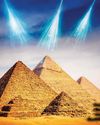
Putting cosmic rays to work
These penetrating interstellar particles have applications from astronomy to archaeology
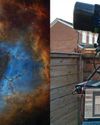
Set up your first imaging sequence
How to automate and coordinate your gear over multiple nights of imaging
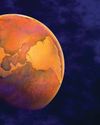
The Universe without gravity
Life with no gravity might sound a fun idea, but as Govert Schilling explains, shutting off this pivotalforce would spell disaster for Earth and beyond
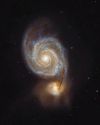
How to blend images taken with different camera setups
Combine data captured at varied focal lengths to create rich, deep images

INSIDE THE SKY AT NIGHT
Back in September 2021, The Sky at Night show spoke to Carly Howett about NASA's then upcoming Lucy mission. As the spacecraft now approaches its main targets - the Trojan asteroids - we check in with her to see how the mission is going

The science of SCI-FI
We love a good sci-fi film, but do they get the science right? Amy Arthur picks six of the big mistakes made in space films

Seeing in a new light
It's National Astronomy Week this month, so take a tip from Mark Westmoquette and let mindful stargazing change your perspective on your life and problems
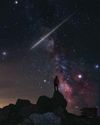
What to do if you find a meteorite
Ever come across an unusual rock and wondered if it's a meteorite? Mark McIntyre explains how to tell if that stone really is a fragment from outer space
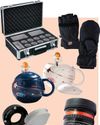
GEAR
Charlotte Daniels rounds up the latest astronomical accessories
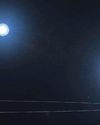
Q&A WITH A STELLAR ECLIPSE SPECIALIST
Many stars are gravitationally locked inside multi-star systems, but a rare new triple-star system has set a new record for how cosy these clusters can get